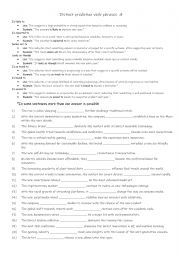
|
A2+-B1 7 Distinct prediction verb phrases 4
These phrases help express different levels of certainty about future events. "Is likely to" suggests something will probably happen based on evidence, while "is expected to" refers to something predicted or planned. "Seems set to" indicates something is prepared to happen soon, and "looks as though" is used when something seems probable based on c...
Level: elementary
Age: 9-100
Type: worksheet
Downloads: 145
|
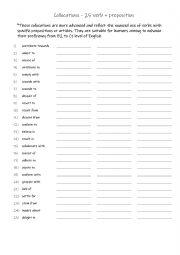
|
25 verb + preposition collocation.
These collocations are more advanced and reflect the nuanced use of verbs with specific prepositions or articles. They are suitable for learners aiming to enhance their proficiency from B2 to C1 level of English. Possible answers on page 2.
Level: advanced
Age: 12-100
Type:
Downloads: 131
|
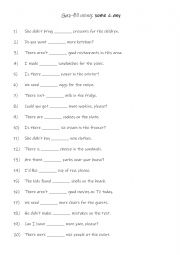
|
Gap-fill using: some & any
Students read the sentences and complete the gap-fill with the correct quantifier. This worksheet is suitable for A1-A2 students. Answers on page 2
Level: elementary
Age: 8-100
Type: worksheet
Downloads: 120
|
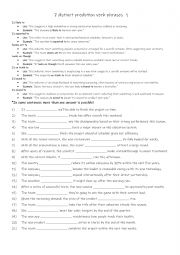
|
7 distinct prediction verb phrases 1
These phrases help express different levels of certainty about future events. "Is likely to" suggests something will probably happen based on evidence, while "is expected to" refers to something predicted or planned. "Seems set to" indicates something is prepared to happen soon, and "looks as though" is used when something seems probable based on c...
Level: intermediate
Age: 12-100
Type:
Downloads: 114
|
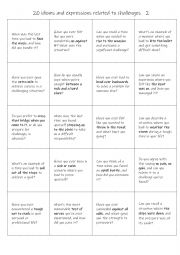
|
B1+-C1 20 idioms and expressions related to challenges 2
This is a speaking reinforcement activity to supplement the other worksheet I uploaded on 22/1/2025. Students working in pairs or small groups can either ask each other the questions or answer the question themselves.
Level: intermediate
Age: 11-100
Type:
Downloads: 117
|
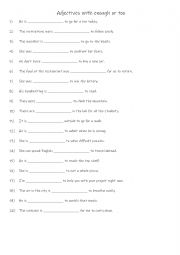
|
A2-B1 Adjectives with enough or too 3
Students read the sentences and using a suitable adjective they complete the sentences using either enough / too. Answers on page 2.
Level: intermediate
Age: 7-100
Type:
Downloads: 106
|
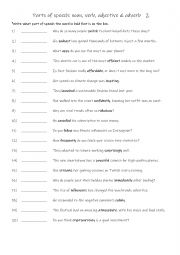
|
Parts of speech noun, verb, adjective & adverb 2
Learning parts of speech�nouns, verbs, adjectives, and adverbs�is essential because they are the foundation of English grammar. Mastering them helps students build grammatically correct sentences, communicate more effectively, expand their vocabulary, improve reading comprehension, and perform better in exams and writing tasks. Answers on page 2.
Level: elementary
Age: 8-100
Type:
Downloads: 107
|
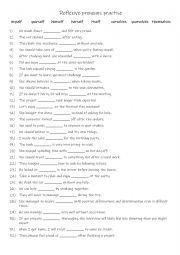
|
A2-B1 Reflexive pronouns practise
Learning reflexive pronouns is essential for effective communication and grammar accuracy, as they indicate when the subject and object of a sentence are the same (e.g., "I made myself a sandwich"). They also provide emphasis (e.g., "She did it herself") and enhance the complexity of sentences (e.g., "We enjoyed ourselves at the party"). Mastering ...
Level: elementary
Age: 8-100
Type:
Downloads: 131
|
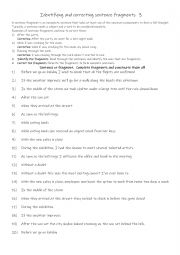
|
Identifying and correcting sentence fragments 3
First, students need to familiarise themselves with identifying and correcting sentence fragments. Then they read the sentences to identify and correct the issue and punctuate all of the sentences Answers on page 2.
Level: elementary
Age: 8-100
Type:
Downloads: 109
|
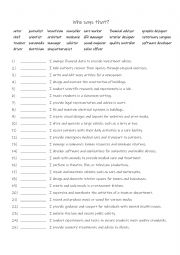
|
B1+-B2 Who says that? 25 Jobs and their description.
Students read the job titles and look for what they do / description about their given role in a job.Answers on page 2. After the exercise has been checked,it could also be used as a non-defining relative clause speaking exercise. Answers on page 2
Level: intermediate
Age: 12-100
Type:
Downloads: 108
|












